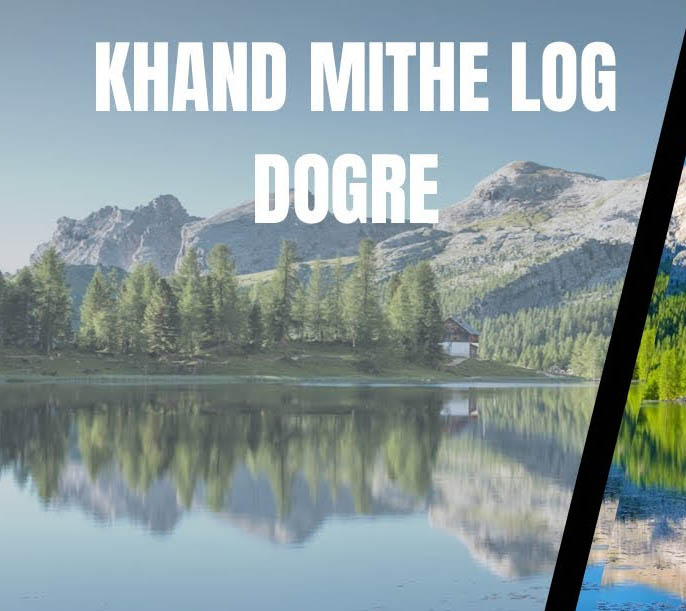Farooq Shah
Growing up, I held the belief that outsiders to Kashmir were often deceitful and prone to criminality, which instilled in me an intense fear of traveling alone. The tales I had heard painted a distorted picture of the world, portraying it as a perilous place filled with aggressive strangers lurking behind every corner.
However, there was a glimmer of hope. Our primary school Urdu curriculum featured a captivating story about Raja Jambu Lochan. Legend has it that during a hunting trip, the king arrived at the Tawi River and witnessed an extraordinary scene: a lion and a goat peacefully drinking from the same spot. After quenching their thirst, both animals departed without any sign of hostility.
This unexpected display of unity left the Raja in awe, prompting him to abandon his hunt and return to camp. His ministers interpreted this harmonious encounter as a symbol of purity in the land, where even natural adversaries could coexist. Inspired by this revelation, he founded a city on that very spot, naming it ‘Jambupura’ on the Tawi’s right bank, overlooking his brother Bahu’s fort. Over time, Jambupura transformed into Jambu-Nagar and eventually became Jammu.
Childhood stories like this serve as guides for understanding the world around us. Although initially simple, this tale played a pivotal role in shaping my perceptions of people both within and outside my home region.
On my most recent visit to Jammu, often referred to as the city of temples, I was intrigued by a slogan printed on public transport: “Khand Meethe Log Dogre.” This piqued my curiosity and made me eager to learn more about its significance.
Overcoming childhood fears is a challenging endeavor, especially when they are rooted deep in memory. Despite my increased awareness, I still felt a lingering apprehension about the outside world. With determination, I embraced travel—a passion that transformed my perspective.
Although my resources were limited, I managed to explore various parts of India and ventured abroad, visiting England thrice and other Middle Eastern countries. These experiences profoundly broadened my worldview, and I encountered only kindness and generosity from strangers, regardless of their backgrounds.
The slogan “Khand Meethe Log Dogre” resonates particularly with me, especially considering the alarming stories I’ve heard about the alleged massacre of Muslims in the Jammu region during India’s partition. The historical events of partition remain a dark aspect of human history, rarely told from a singular perspective.
My interactions with the people of Jammu have been limited; however, during my time as a media communication officer at the State Council of Educational Research and Training (SCERT), I met several individuals from Jammu. This experience deepened my appreciation for their culture and heritage. I found them to be warm, helpful, and surprisingly fond of Kashmiris. Locals in Jammu often express admiration for Kashmiris, considering them knowledgeable and culturally refined. This interaction allowed me to further explore their culture and forge friendships with people in Jammu whom I trust completely.
I inquired about the “Khand Meethe Log” phrase from my friend, Monika Dogra, an academic officer at SCERT. She clarified that the phrase originates from the folk song “O Mithi Dogre Di Boli Te Khand Mithe Log Dogre,” which translates to “Sweet is the Dogri tongue, sweet are the Dogras.” Upon searching for the song on YouTube, I discovered several renditions, with Mahinder Kapoor’s version standing out. I also found a Facebook page dedicated to it with 34,000 followers.
Monika informed me that the song was penned by Padma Sachdev, a celebrated Dogri poet whose contributions have significantly advanced Dogri literature and culture. She has been honored with the Padma Shri award.
“The Dogra identity is vibrant, and the people of Jammu take great pride in their heritage and their roles in shaping India’s cultural and political landscape,” Monika noted.
The Dogras, she explained, are believed to descend from the ancient Kshatriya clans of northern India, tracing their heritage back to the Vedic era.
Prof. Sucheta Pathania, Head of the Department of English and Dean of the Faculty of Arts at the University of Jammu, observed that there was a time when Jammu’s people leaned towards Western culture, igniting a desire to reconnect with their roots. The establishment of the Dogri Department at the university represents progress, although more initiatives are needed.
Prof. Pathania also emphasized that the narratives associated with Jammu often contrast sharply with its rich heritage, calling for responses to counteract these misconceptions. She underscored the generosity of the Dogra community, illustrated by their support for Kashmiri Pandits during their displacement, exemplifying inclusivity transcending religious divides.
“This spirit remains unchanged; despite the cessation of the yearly practice of relocating durbars, the movement of people from Kashmir continues unaffected,” she added.
Pathania expressed hope that the cultures of Jammu and Kashmir will thrive together harmoniously, as they have historically.


Leave a Reply